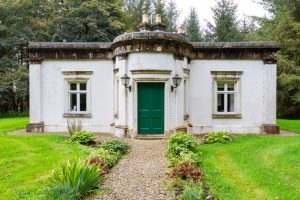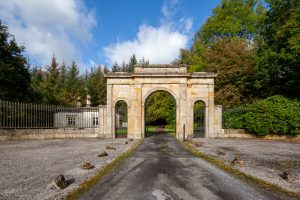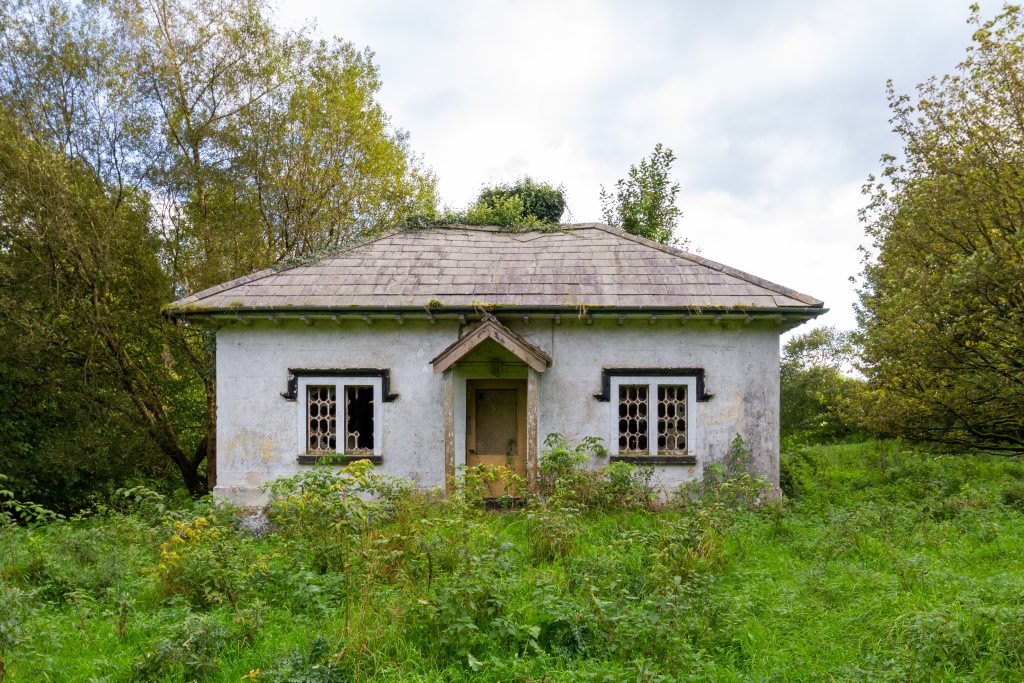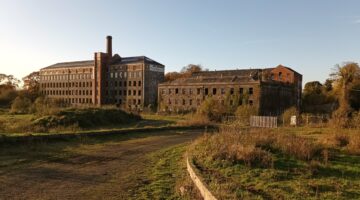Within the historic demesne of Colebrooke park lies an array of architectural gems and curiosities. The estate dates back to the 1640s when lands confiscated by the crown were given to the Brooke  family as a reward for their services during the 1641 rebellion. The estate has remained in the Brooke family ever since and has been home to many notable military and public figures including Field Marshall Viscount Alan Brooke and Sir Basil Brooke, Northern Ireland Prime Minister from 1943-1963.
family as a reward for their services during the 1641 rebellion. The estate has remained in the Brooke family ever since and has been home to many notable military and public figures including Field Marshall Viscount Alan Brooke and Sir Basil Brooke, Northern Ireland Prime Minister from 1943-1963.
In architectural contrast, the estate is home to the ‘Triumphal Arch’ gate lodge at the main entrance and ‘Colebrooke’ gate lodge at the secondary entrance. Both have been attributed to the work of Dublin architect William Farrell and were built in 1830 and 1835 respectively. Although in plan form the lodges are quite similar, the Colebrooke gate lodge was built in a “picturesque Tudor style” (Dean 1994, 105) while the Triumphal Arch lodge was designed to complement the style of the main house and serve as an impressive portal to the estate. In many cases they exhibit flights of fancy in their architectural styles, as with the Colebrooke gate lodge with its octagonal lattice-paned glazing and flanked mullioned windows, which differs so greatly from the main house, lending both independence and individuality
The fortunes of the gate lodges are also in stark contrast; with the Irish Landmark Trust reaching an agreement with the owner to enter into a 50 year lease on the Triumphal Arch lodge and  subsequently successfully restoring it as holiday accommodation, with the assistance of The National Lottery Heritage Fund NI and the former Northern Ireland Environment Agency Listed Building Grant scheme. The lodge opened its doors for guests in 2009, 13 years after being added to the Heritage at Risk register.
subsequently successfully restoring it as holiday accommodation, with the assistance of The National Lottery Heritage Fund NI and the former Northern Ireland Environment Agency Listed Building Grant scheme. The lodge opened its doors for guests in 2009, 13 years after being added to the Heritage at Risk register.
Colebrooke gate lodge, however, is still on the Heritage at Risk register and in a continuing state of deterioration with evidence of subsidence to the rear return. In 2015 a scheme was presented for the rescue of the lodge as a free retreat for cancer suffers but to date this has not come to fruition. The Triumphal Arch lodge is a shining example of the art of what is possible with these small, uniquely interesting buildings and the varied possibilities for reuse.
Gate lodges currently make up 4.6% of the Heritage at Risk register and that percentage is slowly increasing while the actual losses of gate lodges over the last 30 years has been staggering. Perhaps their petite allocation of space has proved difficult to repurpose as a home although, given careful consideration, extensions have been well executed  that are subservient and sensitive to the existing lodges and respect their setting. The Irish Landmark Trust and other organisations have successfully retained and restored gate lodges as holiday accommodation delivering properties that are a ‘home from home’ with modern day comforts but without the space requirements of a full-time family home.
that are subservient and sensitive to the existing lodges and respect their setting. The Irish Landmark Trust and other organisations have successfully retained and restored gate lodges as holiday accommodation delivering properties that are a ‘home from home’ with modern day comforts but without the space requirements of a full-time family home.
Speaking with Caroline Maguire, Senior Architect at the Department for Communities: Historic Environment Division about changes to listed buildings she said “many listed buildings can tolerate some degree of thoughtful alteration or extension to accommodate continuing or new uses. However, listed buildings do vary greatly in the extent to which they can accommodate change without loss of special interest. Some may be sensitive even to slight alterations, especially those buildings with important interiors and fittings. Some listed buildings are subject to successive applications for alteration or extension. In such cases, it should be borne in mind that minor works of indifferent quality, which may seem individually of little significance, can cumulatively reduce a listed building’s special interest. When examining proposals for alteration or extension to a listed building, the Department is seeking to determine whether the works will possibly cause unintentional damage to the historic structure. A thoughtful analysis of the building’s significance and setting – both  architectural and historic, will determine whether the additions are in keeping with other parts of the building and if any new internal or external features – including boundary treatments – will harmonise with their surroundings. The preservation of facades alone and the gutting and reconstruction of interiors, is not good conservation practice. By adopting a flexible and imaginative approach these historic buildings can be adapted to new beneficial uses whilst preserving their architectural and structural integrity.”
architectural and historic, will determine whether the additions are in keeping with other parts of the building and if any new internal or external features – including boundary treatments – will harmonise with their surroundings. The preservation of facades alone and the gutting and reconstruction of interiors, is not good conservation practice. By adopting a flexible and imaginative approach these historic buildings can be adapted to new beneficial uses whilst preserving their architectural and structural integrity.”
Ulster Architectural Heritage and Department for Communities: Historic Environment Division have been involved in discussions for the future of Colebrooke gate lodge where it is hoped that an agreed solution can ensure the survival and revival of this delightful building.
First printed in the Royal Society of Ulster Architect’s Perspective Magazine, November-December 2019.
Photograph Credit: David Bunting, Images NI.



